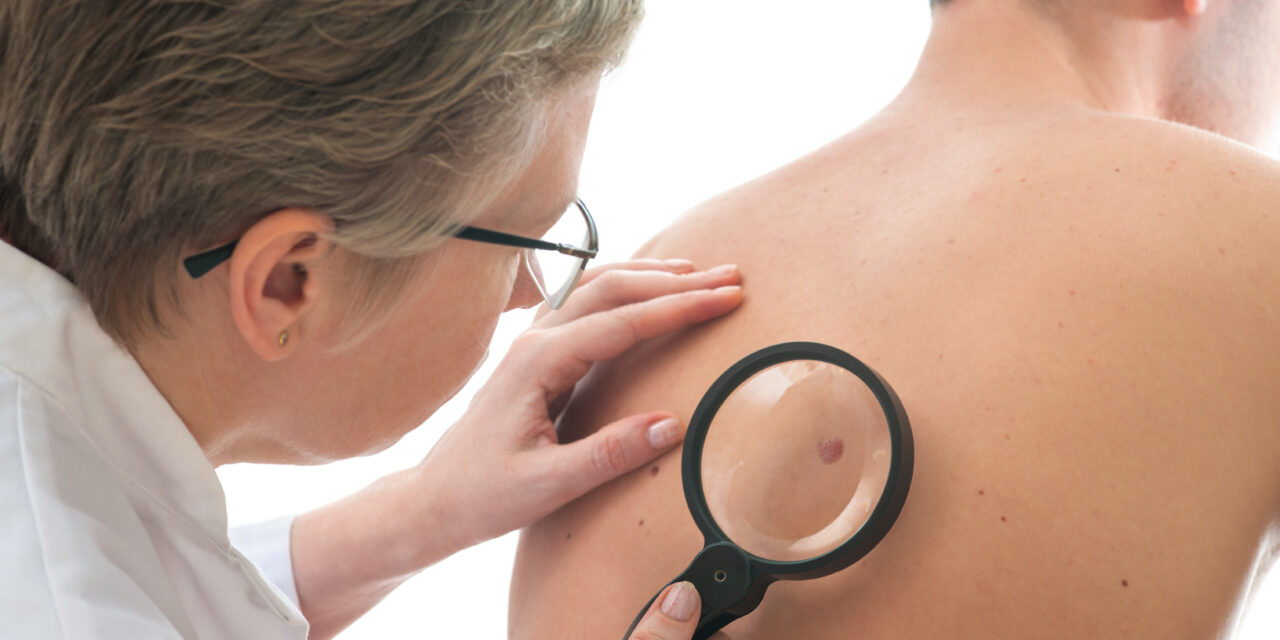Courtesy of Roswell Park Cancer Talk Blog
Gyorgy Paragh, MD, PhD, Dermatology Chair at Roswell Park Comprehensive Cancer Center, wants people to know that not all skin cancers are melanomas. “To understand different kinds of skin cancers requires knowing which cell type causes cancer. Most skin cancers are keratinocyte carcinomas, which develop from abundant cells in skin’s upper layers. The two most common are basal and squamous cell carcinomas, which are non-melanoma cancers,” says Dr. Paragh.
Basal cell carcinoma (BCC), the most common, is slow-growing and usually appears as a pink, pearly spot or bump that bleeds easily, or as a small nonhealing ulcer. BCC responds well to surgery, but if untreated, may grow very large and destroy normal tissues, spreading to lymph nodes or other body parts. Squamous cell carcinoma (SCC), the second-most common skin cancer, comes from keratinocytes (squamous cells), the most abundant skin cell, often appearing as warty bumps, scaly patches, or an unhealing ulcer. SCC can spread to lymph nodes and distant body parts.
Melanoma cancers come from melanocytes and cells that provide skin pigmentation. Rarer than keratinocyte carcinomas, they often spread and are life-threatening. While there are different subcategories of melanomas, they are all called melanoma. Nodular and lentigo malignant melanomas are often found on body locations where the skin has suffered chronic damage from sun exposure, such as the ears, face, and neck. The most frequent superficial spreading melanoma often starts where skin has been intermittently exposed to the sun, and badly burned a few times, such as the mid back, leg calf, and chest. Cancer sometimes develops on seldom-exposed parts of the skin. Acral lentiginous melanoma occurs on the soles of the feet, palms of the hand, or around and under nails. It is more common in individuals with darker skin, and in places people don’t usually look, so it is easily missed, often diagnosed late, and difficult to successfully treat.
Skin cancer treatments include surgery and topical chemotherapy. About 5 million cases of skin cancer are identified yearly, and about 200,000 are melanomas. Half are invasive melanomas, and half are non-invasive. Non-invasive tumors are typically cured with surgical removal. Invasive melanomas can also be cured with surgery, but if they have more concerning features or have spread to other body parts, they may require sentinel lymph node biopsy, systemic therapy, or other advanced therapy to target melanoma cells.
The remaining skin cancers are mostly keratinocyte carcinomas, of which 20 to 30% are squamous cell carcinomas. The rest are basal cell carcinomas, often found in cosmetically sensitive areas where surgical treatment can be emotionally stressful. Most keratinocyte carcinomas are removed surgically, but some are treated with topical chemotherapy, topical immunotherapy, or photodynamic therapy, even if they have spread.
Dr. Paragh stresses the importance of knowing your personal risk for developing skin cancer, along with your family history. He also encourages people to perform self-skin checks and undergo regular dermatology checks. Learn how to perform your own skin-check at https://www.roswellpark.org/cancer/skin/diagnosis/skin-self-exam. Call 1-800-767-9355 to learn more or make an appointment.












